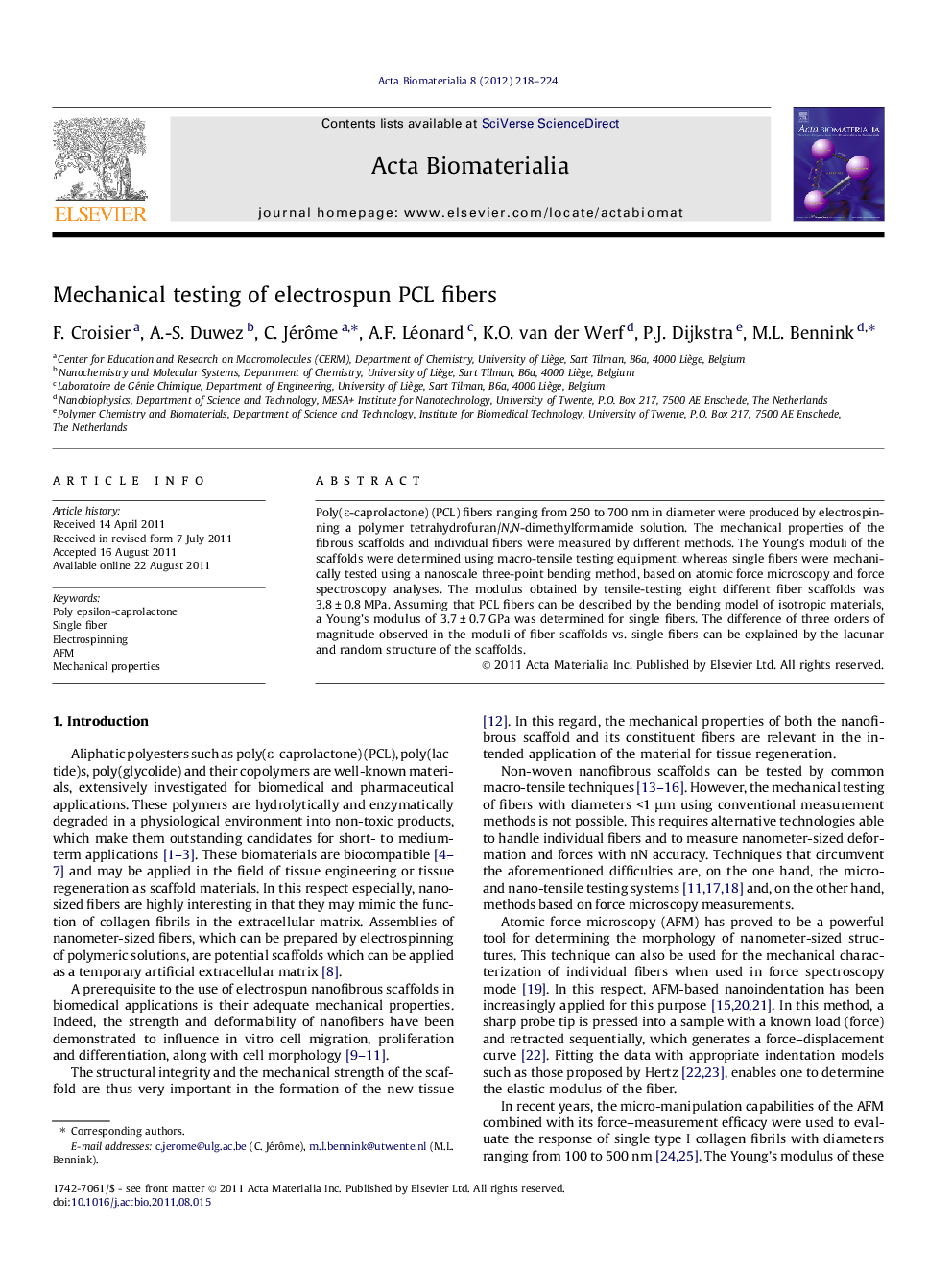| Article ID | Journal | Published Year | Pages | File Type |
|---|---|---|---|---|
| 10160089 | Acta Biomaterialia | 2012 | 7 Pages |
Abstract
Poly(ε-caprolactone) (PCL) fibers ranging from 250 to 700 nm in diameter were produced by electrospinning a polymer tetrahydrofuran/N,N-dimethylformamide solution. The mechanical properties of the fibrous scaffolds and individual fibers were measured by different methods. The Young's moduli of the scaffolds were determined using macro-tensile testing equipment, whereas single fibers were mechanically tested using a nanoscale three-point bending method, based on atomic force microscopy and force spectroscopy analyses. The modulus obtained by tensile-testing eight different fiber scaffolds was 3.8 ± 0.8 MPa. Assuming that PCL fibers can be described by the bending model of isotropic materials, a Young's modulus of 3.7 ± 0.7 GPa was determined for single fibers. The difference of three orders of magnitude observed in the moduli of fiber scaffolds vs. single fibers can be explained by the lacunar and random structure of the scaffolds.
Related Topics
Physical Sciences and Engineering
Chemical Engineering
Bioengineering
Authors
F. Croisier, A.-S. Duwez, C. Jérôme, A.F. Léonard, K.O. van der Werf, P.J. Dijkstra, M.L. Bennink,
